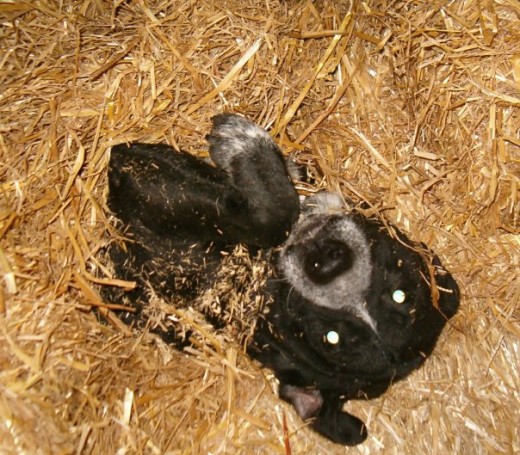Don't Forget Your Best Friends



When the Arctic Blast Comes, Don’t Forget Your Best Friends!
The recent Polar Vortex that all 50 states had experienced this first week of 2014 was not merely cold polar air. It was actual arctic air which had transferred down from the North Pole to cover our entire nation with sub-freezing temperatures.
Here in the Appalachians it got cold. Plain and simple. It wasn’t as cold as the northern states, but we did experience sub-zero temperatures along with the ensuing wind chill. We all took precautions with our homes and autos, winterizing everything. We wrapped our pipes, double insulated our well pumps and sealed the windows.
But did we winterize our pets?
We have several dogs up here on our mountain, mostly large breed. They live outdoors in kennels. There are too many of them to bring indoors, and even though many are siblings to each other, some of them have a tendency to not get along with certain others. With the extreme cold weather here, we needed to keep them warm to avoid frostbite and even death.
Insulation is the Key
We are headed into our ninth winter with this brood of pooches. We have found that giving them an insulated shelter is the first and foremost priority to keeping them safe. You can build your own doghouses or buy one already made. It is best to stick with wood, as plastic gets cold quicker and stays cold longer. If you build your own, you can line it with Celotex foam boards and cover that with a sheet of plywood (dogs love to chew on foam). Otherwise you need to cover the dwelling from the outside. I use a heavy rubberized or vinyl tarp to repel moisture.
Hay is a great insulator. Hay is very versatile as an insulator and can be used for bedding as well. Fill your doghouse with hay for bedding, and then stack the bales of hay all around the house and on top (igloo style) for added warmth. If you don’t have a flap covering the door, set a bail or two in front of the door to block the wind. Make sure that there is room for the dogs to go in and out.
The More the Merrier
The more dogs that you can get together in one place, the warmer they will be. Make sure that there is a source of ventilation in the dog house. A lot of dogs in one spot will make it stuffy and smelly in there. If there is not proper ventilation, there could be a carbon dioxide buildup which could cause other problems, even suffocation. Usually the wind blowing past the opening of the door will be sufficient, but side vents are recommended.
Other Options
I have a friend that has two Blue Tick hound dogs. He built them a small wooden shed with a doggie door on one side. On the inside he added some nice beds for them, a heater for the winter, and an air conditioner for the summer and he even piped in running water and an automatic feeder. He even had a clock on the wall “so they knew what time to get up”. It was a palace for dogs!
A place in your garage or basement next to a heat source like a furnace or a water heater would be another ideal place for your pets. The options are endless, and it is all up to you how you want to keep your pet warm in the cold winter months.
Location is Important
We learned from experience that the location of a dog house is very important. Thinking the shade of a tree would protect the small shelter from snow, rain and hail was not the best idea. Thunderstorms can bring down large, damaging limbs on top of a small doghouse, causing serious damage and possibly injury or death to the inhabitants. Our bad experience came when lightning struck the tree that they were parked under, and although all of the dogs survived the jolt, they are forever deathly afraid of thunderstorms now.
Check Your Pets
Check your pets every morning after a cold night, and frequently during bitterly cold days. When the temperatures get below freezing, especially in the low 20’s and into the teens, it is very easy for them to become frostbitten. Be sure to check their ears and tails first. These are the areas of the least blood flow, and they are exposed to temperature extremes more so than the rest of the animal’s body. Check their paws and muzzles. If there is any sign of frostbite or any other injury, bring the affected animal indoors and contact your veterinarian immediately.
I hope that this little bit of advice helps you with your pets during this winter freeze. If you have any questions, just contact me through this site.
As always my friends, thanks for stopping by. Keep warm, do good deeds for people that you don’t know and always give the Good Lord above thanks for all things, the good and the not so good.
I bid you peace.
©2014 By Del Banks








